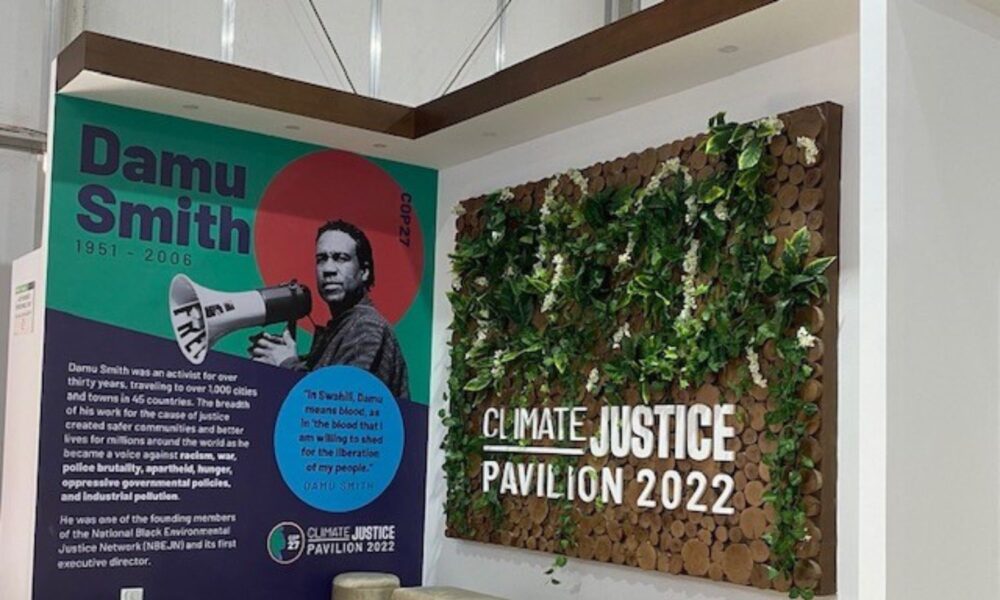I’ve just arrived in Sharm el-Sheikh, Egypt, for the 27th Conference of the Parties to the United Nations Framework Convention on Climate Change—the UN’s annual global climate conference, aka COP27. It’s a privilege to be here representing the Union of Concerned Scientists with my colleagues, peers from other NGOs and wider civil society and government and private sector leaders from around the globe. Our shared aim? To secure a livable future for people and the planet for generations to come.
There’s much on the agenda at this year’s summit, including negotiations on what measures countries are willing to take to cut emissions in line with the Paris Agreement—a commitment they made at COP21 back in 2015. My UCS colleagues and I are here because global climate policy must be informed by and aligned with the latest science. We’re here to pressure world leaders to use this opportunity to secure ambitious action on climate, now, and to remind them that our narrow window to avoid the worst climate impacts is closing.
Supporting the Climate Justice Pavilion at COP27
We’re also here as co-sponsors of a new and important initiative: the Climate Justice Pavilion, located in the “blue zone” in Sharm el-Sheikh. If you’ve been to any conference or convention, imagine the blue zone as the rooms where official conference business happens, and the green zone as the lobby where people spend time informally and vendors dispense cool swag. The blue zone at COP27 holds negotiation rooms, along with the official plenary space where political leaders meet and make decisions. The green zone is usually some distance away from the blue zone, and that’s where academics, environmental organizations, youth-led movements, Indigenous activists, and business leaders set up their spaces and host events throughout the conference.
At previous COP sessions, environmental and climate justice activists and organizations had little access to the decisionmakers making critical choices that affect the communities they represent. Notably, this year, the Climate Justice Pavilion sits in the blue zone, staffed by U.S.-based environmental justice groups, including some of my UCS colleagues and other activists representing people living on the frontlines of climate change.
The goals for the Climate Justice Pavilion are for climate activists to meet and share knowledge, strategies, and tactics for grassroots change, to build their capacity through these new relationships, and invite mainstream attendees to learn about the issues that affect frontline communities. I’m excited for the opportunity for exchange and collaborations among these passionate, dedicated advocates. And importantly, the Pavilion, and its activists and attendees, are in the direct line of the global leaders making climate action decisions that will affect the most vulnerable communities on our planet.
Why do leaders need to hear from climate justice activists?
As much as UN COP27 attendees agree that the world is rapidly heating, that severe consequences of climate change are already here, and that we need to cut emissions drastically and rapidly, there just hasn’t been enough meaningful input in the past at these international talks from the people who are most affected by climate change impacts and fossil fuel pollution.
Around the world and especially in the Global South, people are being forced out of their homelands by fast-moving disasters like floods and ever more extreme storms—and slow-moving disasters like sea-level rise. It is crucial that global frontline communities have their voices and needs heard, understood and heeded by COP27 decisionmakers—especially since they’ll be debating the topic of climate funds for the countries being hit hardest by climate change.
Just as is the case in the United States, those countries and communities who have contributed least to the climate crisis globally are paying the heaviest costs. This inequity must be addressed: richer nations must pay their fair share of what’s owed to those countries with the fewest resources experiencing the worst loss and damage from climate change. As a US-based organization, UCS will be pushing our government representatives to pay what we owe, considering that the US is the leading contributor to heat-trapping emissions cumulatively. We have an obligation to cut more emissions, faster, and to provide climate financing and pay up for loss and damage. When we advocate to support funding at the global scale to address loss and damage, that is what real climate justice looks like.
The legacy of Sharm el-Sheikh: up to us
COP21, held in Paris in 2015, will always be remembered for the Paris Agreement: a transcendent moment of hope that the people of the world could come together to address a global threat.
I’m hopeful that Sharm el-Sheikh this year will be remembered for richer nations finally owning up to their oversized contributions to emissions globally, and establishing a solid, actionable plan to fund robust adaptation and mitigation actions in low-income countries. I’m hopeful that this will be the COP that spurs countries to recognize the severity of the climate crisis and commit to more ambitious emissions reductions targets.
Being here in Egypt, surrounded by people from around the world who care as much about the climate crisis as I do, at this inflection point in history when we can still work together to make a real difference—it’s among the most meaningful experiences I’ve ever had. My colleagues and I at UCS will be watching the negotiations carefully over the days ahead and reporting back.

